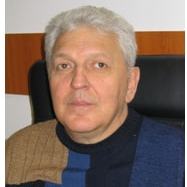Advances and Challenges in Pulsed Laser Deposition for Complex Material Applications
A special issue of Coatings (ISSN 2079-6412). This special issue belongs to the section "Laser Coatings".
Deadline for manuscript submissions: 30 June 2024 | Viewed by 3737

Special Issue Editors
Interests: thin films deposition; biomaterials and protective coatings; characterization methods; natural origin calcium phosphates as sustainable biofunctional coatings for medical applications; biomimetic metallic implants
Special Issues, Collections and Topics in MDPI journals
Interests: pulsed laser deposition; modification and characterization of nanostructured thin coatings; matrix-assisted pulsed laser evaporation (MAPLE); laser surface studies and processing; biomaterials thin layers; tissue engineering; biomimetic metallic implants; optoelectronics and sensors
Special Issues, Collections and Topics in MDPI journals
Special Issue Information
Dear Colleagues,
We warmly invite you to submit your recent work in the field of thin film and nanoparticles synthesis by pulsed laser deposition (PLD) to the Special Issue entitled “Advances and Challenges in Pulsed Laser Deposition for Complex Material Applications”.
PLD is a powerful technique to produce either nanoparticles, or thin films, both in single and variable compositions, from a wide range of complex materials. In respect of other deposition techniques, PLD confers essential advantages such as adaptability, accurate control of the growth rate, stoichiometric transfer (even for very complex target materials), and an unlimited degree of freedom in the geometry of the experimental set-up.
The nanoparticles produced by PLD are already used in industry for the generation of energy, in optoelectronics, information, and data storage. Thin film synthesis via PLD is frequently used to improve the performances of bulk material surfaces, such as structural, morphological, chemical, optical, electrical, and/or mechanical.
The PLD conventional technique was extended after appropriate modifications for the processing of organic materials, ranging from polymers to proteins and even living cells, which were earlier reported to be definitively altered after interaction with high power laser radiation. Such a version of PLD is known as Matrix-Assisted Pulsed Laser Evaporation (MAPLE).
Due to high versatility, the PLD technique has found its place in both laboratory research and industry for a wide variety of applications. The unique capabilities of the PLD technique will therefore enable new applications by driving systems to cover larger surfaces.
The aim of this Special Issue is to collect state-of-the art research papers and reviews on the latest trends in laser deposition of thin films and nanoparticles. The topics of interest are devoted but not limited to applications in a range of different technologies:
- Medical implants;
- Drug delivery;
- Sustainable materials;
- Environmental sensors;
- Light emitters;
- Protection of cutting and drilling tools;
- Magnetic devices;
- High-temperature superconductors;
- Solar cells;
- Energy storage;
- In situ microstructuring;
- Catalysts.
Dr. Liviu Duta
Prof. Dr. Ion N. Mihailescu
Guest Editors
Manuscript Submission Information
Manuscripts should be submitted online at www.mdpi.com by registering and logging in to this website. Once you are registered, click here to go to the submission form. Manuscripts can be submitted until the deadline. All submissions that pass pre-check are peer-reviewed. Accepted papers will be published continuously in the journal (as soon as accepted) and will be listed together on the special issue website. Research articles, review articles as well as short communications are invited. For planned papers, a title and short abstract (about 100 words) can be sent to the Editorial Office for announcement on this website.
Submitted manuscripts should not have been published previously, nor be under consideration for publication elsewhere (except conference proceedings papers). All manuscripts are thoroughly refereed through a single-blind peer-review process. A guide for authors and other relevant information for submission of manuscripts is available on the Instructions for Authors page. Coatings is an international peer-reviewed open access monthly journal published by MDPI.
Please visit the Instructions for Authors page before submitting a manuscript. The Article Processing Charge (APC) for publication in this open access journal is 2600 CHF (Swiss Francs). Submitted papers should be well formatted and use good English. Authors may use MDPI's English editing service prior to publication or during author revisions.
Planned Papers
The below list represents only planned manuscripts. Some of these manuscripts have not been received by the Editorial Office yet. Papers submitted to MDPI journals are subject to peer-review.






